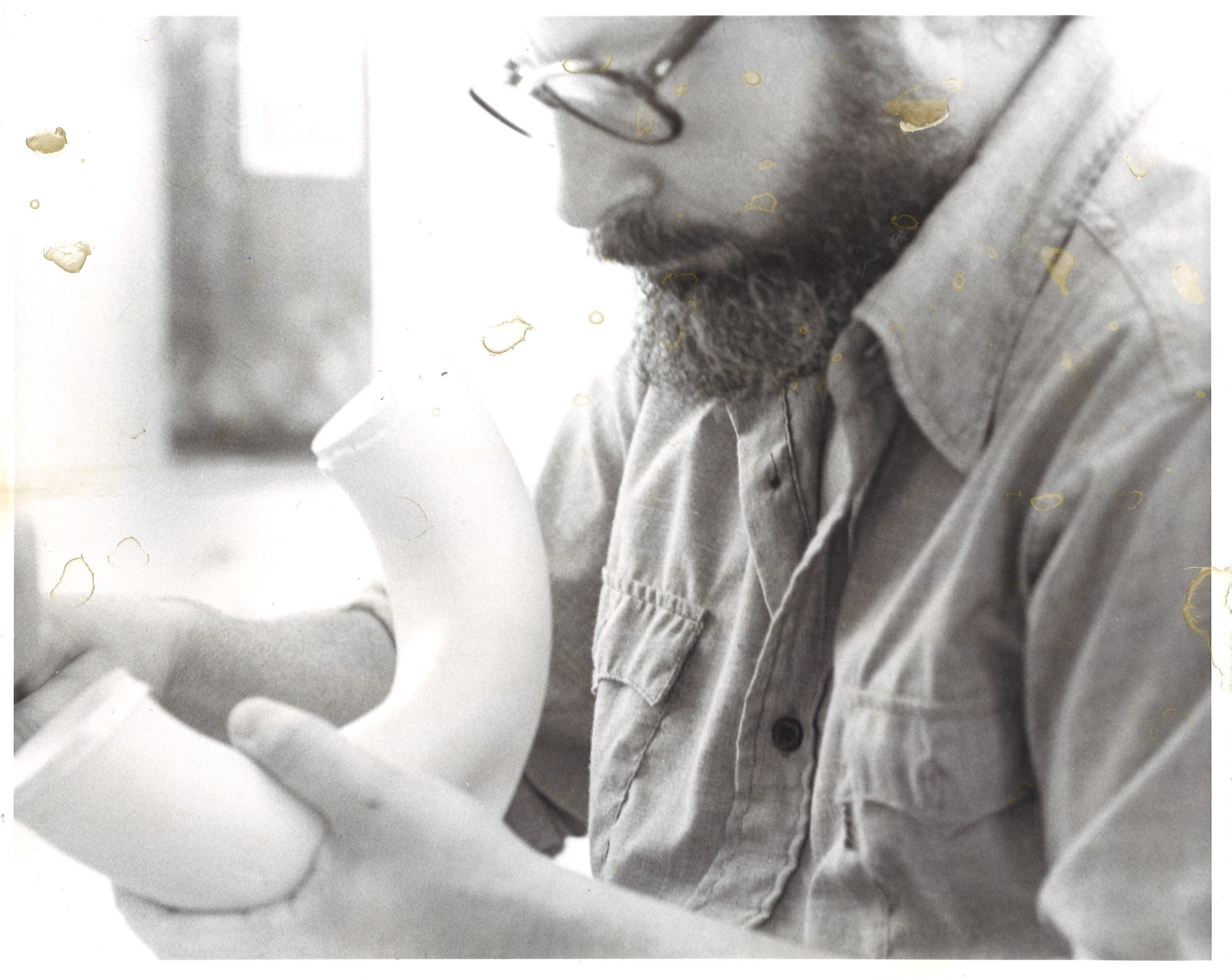Michael Cohen

(b. 1936, Boston, Massachusetts) lives and works in Amherst, Massachusetts
Lidded Arch Form, 1975
porcelain, 5.75 x 8 x 2 inches, 93.39.112AB
Michael Cohen had an artistic upbringing, and was selected during high school to participate in intensive art classes at the Boston Museum of Fine Arts, an experience which encouraged him to attend college at Massachusetts College of Art and Design. It was during his sophomore year as an undergraduate that he was introduced to clay, and the freedom of being able to manipulate it into anything. After college, Cohen enlisted in the U.S. Army for a few years to work as a photographer in Germany. During his vacations he studied pottery in England, where he was first introduced to raku firing. After the Army, he studied for a year at Cranbrook graduate school in Michigan, and then worked for a year at Haystack Mountain School of Crafts in Maine. In 1961 he opened a primarily tableware production studio in Newton, Massachusetts, and in 1973 he moved and opened a new studio in Amherst, Massachusetts, where he and his son focused on ceramic tile production.
In the spring of 1971, under the auspices of the International Academy of Ceramics, the Tennessee Arts Commission pledged its support for the promotion and establishment of the U.S. International Ceramic Symposiums. The Symposium’s mission to help develop a worldwide network of support for ceramic art was achieved by bringing together top ceramic artists from around the world for a month-long sharing of ideas and creation of innovative ceramics.



Images of Cohen during the Symposium. Additional images below.
Cohen represented the United States at the Second U.S. International Ceramic Symposium, which consisted of twelve artists from seven different countries, and was hosted in the summer of 1975 at the Arrowmont School of Crafts in Gatlinburg, TN. He spent his time at the Symposium experimenting with an extruder, creating porcelain cylindrical extrusions that he would bend, flatten, and incorporate into other forms. He made several arched and lidded forms that emphasized simple geometry and subtle color variation. He also designed ntwo stools that incorporated clay slabs.
After the Symposium, Cohen continued his work as a production potter making traditional functional vessel forms. In 1997, he created a line of blue-glazed ceramic tiles that became so popular, he transitioned to exclusively making tiles. Today his tiles designs can be found in over 100 stores throughout the United States.
Cohen has work in the collections of the Museum of Modern Art, the Museum of Art and Design and the Museum of Contemporary Crafts in New York City; The Everson Museum in Syracuse, NY; the Fuller Art Museum in Brockton, MA; the Victoria and Albert Museum in London, England. He is also the founder of the Asparagus Valley Potters Guild in Western Massachusetts.


Left: 2 Part Lidded Forms, 1975, porcelain, 4 x 7 x 4 inches, 93.39.113AB Right: 2 Part Lidded Forms, 1975, porcelain, 4 x 7.25 x 3.75 inches, 93.39.114ab


Left: Yard Stool (slot top), 1975, stoneware, 15.5 x 10 x 10 inches, 93.39.135 Right: 2 Piece Arch Form Sculpture, 1975, porcelain, 4.75 x 10.25 x 4.5 inches, 93.39.149



Left, Center, and Right: 3 Part Box Series, 1975, porcelain, celadon, 8.375 x 2.5 x 2.125 inches, 93.39.264ab, 265ab, 266ab
Written by Aiden Layer, TN Arts Intern

